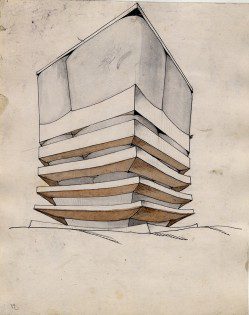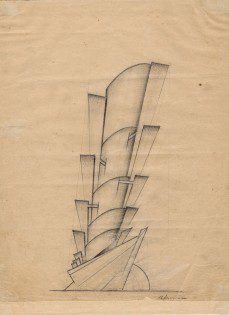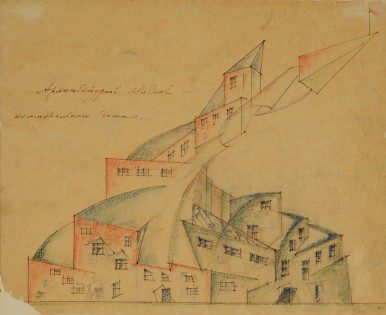ARCHITECTURE:VKHUTEMAS at at Martin Gropius

VKHUTEMAS (Higher Art and Technical Studios) was the Russian State Art and Technical School founded in 1920 in Moscow. The workshops were established by a decree from Vladimir Lenin with the intentions to prepare master artists of the highest qualifications for industry, builders, and managers for professional-technical education. The school had 100 faculty members and an enrollment of 2,500 students. VKHUTEMAS was formed by a merger of two previous schools: the Moscow School of Painting, Sculpture and Architecture and the Stroganov School of Applied Arts.

It was dividen into production workshops (Wood, Metal, Textiles, Printmaking, Ceramics) and art workshops (Painting, Sculpture, Architecture) several thousand students received instruction. An introductory course with a completely novel artistic and scientific curriculum was followed by a degree course lasting several years. The staff of the school consisted of famous artists and architects of both sexes, whose names are associated with the heyday of the Russian avant garde: El Lissitzky, Naum Gabo, Moisei Ginzburg, Gustav Klutsis, Vasily Kandinsky, Nikolai Ladovsk, Alexander Melnikov, Lyubov Popova, Alexander Rodchenko, Alexei Shchusev, Varvara Stepanova, Vladimir Tatlin and Alexander Vesnin. The aim was to harness art and architecture to the task of making the “New Man”, thus bringing about a revolutionary renewal of the relationship between art and society. But the bitter disputes that broke out over the “Right” course were also reflected in the history of the school, its teachers and its students, since architecture, as a “synthetic art”, had a key role to play here. The degree dissertations and experimental research projects show enormous utopian zeal and architectural potential. They also illustrate, often in extreme form, the credos of the conflicting tendencies at the Vkhutemas.

The influence of the Vkhutemas extended far beyond the borders of Soviet Russia. There were contacts with the Bauhaus, which had been founded in Weimar in 1919 before moving to Dessau. In 1925 Vkhutemas students exhibited at the “Exposition internationale des arts décoratifs et industriels modernes” in Paris, together with their teachers Melnikov and Rodchenko. In 1926, the school was reorganized, in 1927, in order to emphasize the scientific aspect, the school was renamed the “Higher Artistic-Technical Institute”, or VKhUTEIN according to the desire of the authorities to move away from the fine arts towards applied art in industry and manufacturing. Radically functionalist aims in housing construction and town planning came to the fore. In 1930 the school was closed down and the Architectural Faculty was merged with the Higher Engineering and Architectural Institute, later the Moscow Architectural Institute. The Russian avant-garde lost its influence and was radically sidelined in favour of “Socialist Realism”. There would no longer be any place for Constructivist concepts in Russia’s new planned economy and in 1930 dissolved, following political and internal pressures throughout its ten-year existence. The school’s faculty, students, and legacy were dispersed into as many as six other schools. However, many of the materials produced by students and faculty of VKHUTEMAS survived and are now part of extensive archives owned by Moscow Architecture Institute, MARKHI and Shchusev State Museum of Architecture. From the collection of Shchusev State Museum of Architecture 250 works: sketches, drawings, paintings and models by staff and students of Vkhutemas will be on display at Martin-Gropius-Bau Berlin.
Info: Martin-Gropius-Bau Berlin, Niederkirchnerstraße 7, Berlin, Duration: 5/12/14-6/4/15, Days & Hours: Wed -Mon: 10:00-19:00, www.berlinerfestspiele.de/en

